Near-red wavelengths, especially in the near-infrared range, boost your brain function by penetrating deep into your tissues and energizing cells. This light stimulates mitochondrial activity, improving ATP production, which is essential for brain health. With increased ATP, your cognitive functions, like memory and mental sharpness, improve remarkably. Additionally, near-infrared therapy offers neuroprotection, safeguarding your brain cells from damage and promoting recovery in various neurological conditions. Overall, these wavelengths enhance your brain's performance. If you're curious about the specifics of how this works, there's plenty more to explore on the subject.
Understanding Wavelengths and Penetration
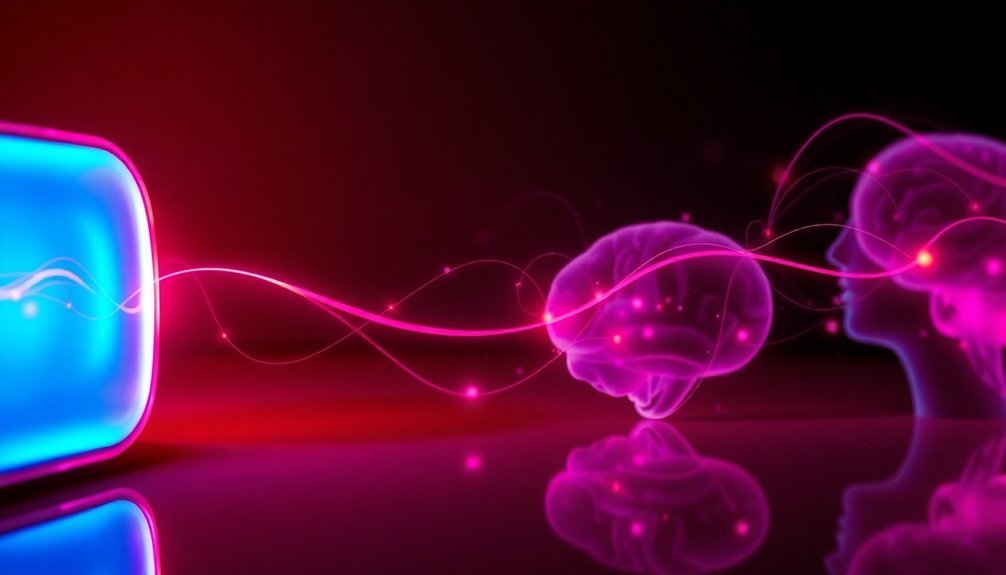
When it comes to understanding how wavelengths affect brain function, it's essential to recognize the differences between red and near-infrared (NIR) light. Red light ranges from 620 to 750 nm, making it visible to your eyes, while NIR light sits just beyond that spectrum, spanning from 751 to 1400 nm and remaining invisible.
This invisibility doesn't mean it lacks impact; in fact, NIR light can penetrate deeper into brain tissue, reaching about 4 cm, whereas red light only penetrates about 4.5 mm. The penetration ability of these wavelengths is influenced mainly by the optical window formed by blood and water absorption. Factors like tissue type and light intensity also play a part.
A recent study showed that specific NIR wavelengths, like 810 nm, greatly outperform red light regarding depth. While red light appears at 660 nm and can reach 21 mm in cadaver studies, NIR light at 808 nm penetrated up to 40 mm. This increased depth of penetration allows near-infrared light to influence deeper brain regions, potentially enhancing cognitive function more effectively than red light.
Cellular Mechanisms of Light Therapy
Light therapy, especially with near-infrared wavelengths, offers significant insights into cellular mechanisms that enhance brain function. By stimulating mitochondria, this innovative approach drives essential processes crucial for your brain's health and efficiency.
Here are some key mechanisms at play:
- Mitochondrial Stimulation: Near-infrared light activates cytochrome c oxidase, boosting electron transport and ATP production. This surge in energy is critical for neuron function.
- Anti-Inflammatory Effects: Photobiomodulation promotes the M2 anti-inflammatory phenotype, reducing neuroinflammation. A healthier cellular environment supports efficient processes and speeds up recovery, while also facilitating a shift in immune response from M1 to M2.
- Cellular Health and Efficiency: Light therapy increases mitochondrial numbers and activity. Enhanced ATP production strengthens cellular functions involved in tissue repair, immune response, and overall vitality.
- Systemic and Local Effects: The benefits of light therapy extend beyond the application site, with systemic effects reaching various tissues and organs through the bloodstream, contributing to holistic health.
With these mechanisms working together, light therapy offers a promising avenue for enhancing your brain function and overall well-being.
Cognitive Function Improvement
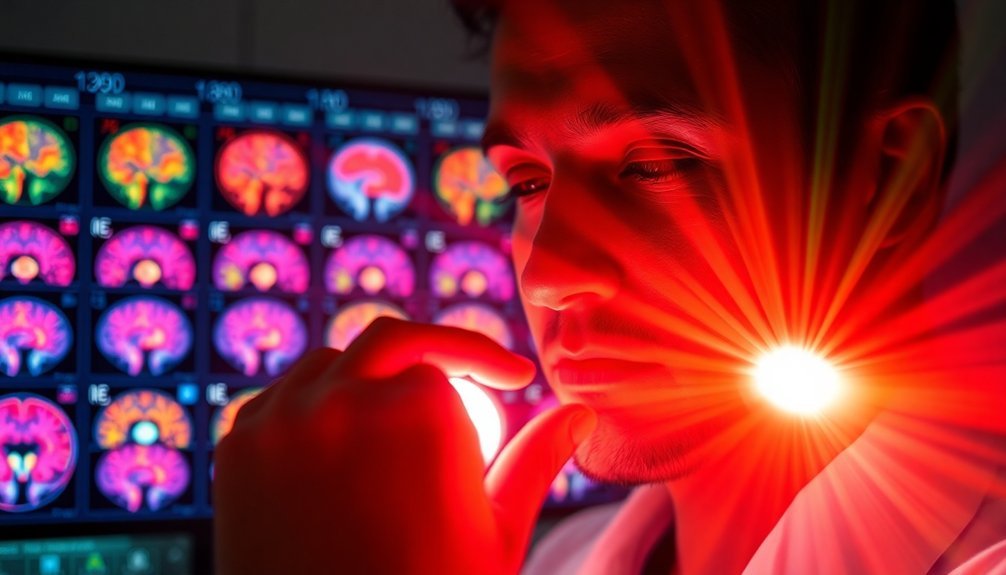
Cognitive function can greatly improve with the application of near-infrared light therapy. You may experience enhanced mental sharpness, boosted memory, and improved reaction times. This therapy supports better performance on challenging cognitive tests, allowing you to tackle them with less effort.
Young, healthy adults show notable increases in cognitive function, while there's potential for preventing or slowing cognitive decline. Near-infrared light stimulates your brain cells' mitochondria to produce more ATP, the essential fuel for ideal brain function. It also promotes neuroprotection, which helps safeguard your brain cells from damage.
By increasing stem cell production, reducing inflammation, and improving blood flow, light therapy enhances oxygenation and healing in your brain. Specific cognitive benefits include improved visual working memory when using light at 1064nm. Additionally, optimal red light wavelengths have been shown to enhance cellular metabolism, further contributing to cognitive benefits.
Even individuals with dementia or Alzheimer's disease may notice enhancements in memory with this treatment. Mild cognitive impairment (MCI) patients have shown acute memory improvement following a single light therapy session, alongside better Mini-Mental State Examination scores.
Experiments and clinical trials consistently support the efficacy of near-infrared light therapy in boosting cognitive function, making it a promising avenue for brain health.
Impact on Neurological Conditions
Recently, researchers have increasingly focused on the impact of near-infrared light therapy on various neurological conditions. This therapy shows promising results for a range of issues, from neurodegenerative diseases to traumatic brain injuries.
It's particularly exciting because NIR light enhances mitochondrial function and boosts ATP production, which are vital for brain cell health and energy.
Here are four key impacts of near-infrared light therapy on neurological conditions:
- Neurodegenerative Diseases: NIR therapy might help slow the progression of conditions like Parkinson's and Dementia by improving overall cellular health.
- Traumatic Brain Injury: Specific wavelengths can enhance neurological recovery, reduce lesion volume, and promote neuronal repair through increased BDNF production.
- Psychiatric Disorders: Red and NIR light may improve mood and reduce symptoms of depression and anxiety by enhancing mitochondrial function and promoting neuroplasticity.
- Pain and Recovery: NIR therapy aids in pain relief and wound healing, fundamental for minimizing recovery time after neurological injuries.
These findings position near-infrared light therapy as a compelling option for treating diverse neurological conditions.
Promoting Brain Cell Regrowth
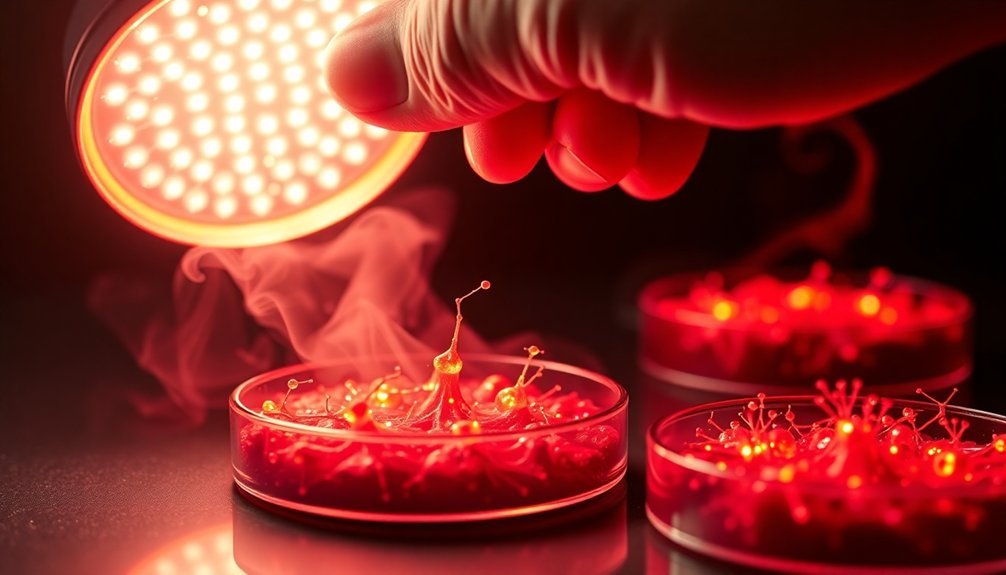
Near-infrared (NIR) wavelengths are emerging as a powerful tool for promoting brain cell regrowth. When NIR photons penetrate your brain, they stimulate cytochrome c oxidase in your mitochondria, leading to increased ATP production. This boost in cellular energy supports neuronal health and function, enhancing your brain's overall performance.
NIR light also promotes neurogenesis by stimulating the production of Brain-Derived Neurotrophic Factor (BDNF), which encourages the growth of new neurons and synapses. Additionally, the therapy protects neurons by reducing oxidative stress and inhibiting apoptosis, meaning your brain cells can survive and thrive longer.
You'll also notice improved blood flow and oxygen delivery due to increased nitric oxide production, which supports various neuroprotective mechanisms. With the right wavelengths, such as 633 nm or 808 nm, studies show a significant uptick in mitochondrial activity and neuroprotection, effectively reversing damage and supporting regrowth.
Experimental models have demonstrated that NIR light not only enhances these cellular processes but also leads to improved cognitive function in clinical settings.
Therefore, you're looking at a promising avenue for harnessing NIR wavelengths to boost brain cell regeneration and overall brain health.
Effective Delivery Methods
Often overlooked, effective delivery methods for near-infrared (NIR) light therapy play an essential role in maximizing its benefits for brain function.
You've got several promising techniques to assess, each with unique advantages.
- Transcranial Delivery: This method allows NIR light to penetrate the skull, reaching deeper brain areas, which stimulates the glymphatic system for effective waste clearance and enhances cellular processes without excessive heat.
- Direct Skin Application: Utilizing LED bulbs, this approach targets exposed skin to deliver red and NIR light directly, enhancing mitochondrial activity and ATP production, key for improved cognitive function.
- Intranasal Delivery: This less common but promising method involves administering NIR light through the nasal cavity, directly accessing brain tissues and potentially bypassing barriers posed by the skull.
- Device and Parameter Refinement: Devices like Vielight Neuro use optimal NIR wavelengths and adjust parameters like power density to guarantee effective brain photobiomodulation, while avoiding any adverse effects.
Research and Clinical Studies
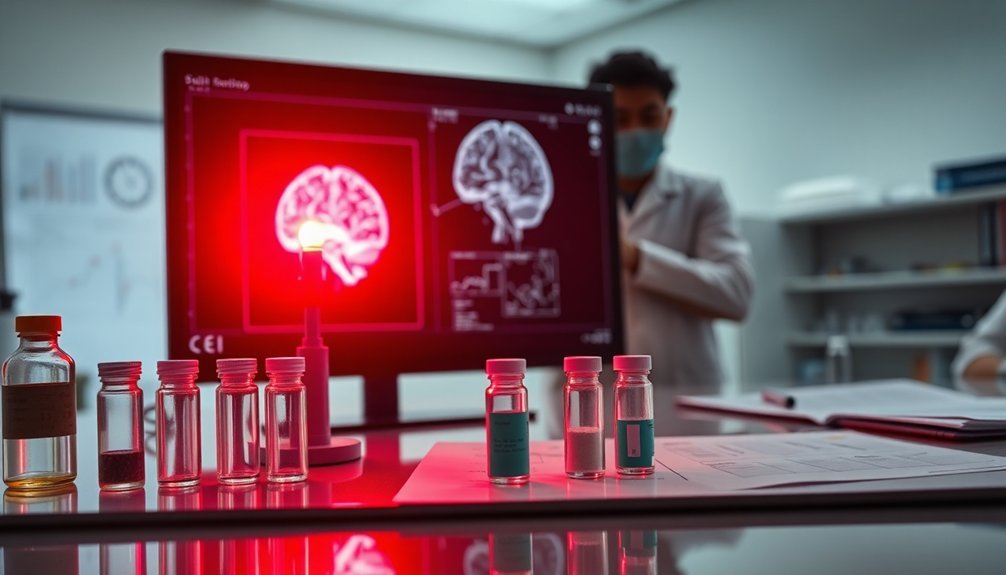
Research on near-infrared (NIR) light shows promising cognitive enhancements, specifically in its ability to boost brain function.
Clinical findings reveal that NIR light therapy not only improves mental performance but also aids in recovery from neurological injuries.
You'll find that these studies highlight the effectiveness of NIR light in promoting better brain health and cognitive abilities.
NIR Light Cognitive Enhancements
Cognitive enhancements through near-infrared (NIR) light therapy have garnered attention as a promising avenue for improving brain function. Studies show that NIR light can boost cognitive efficiency, allowing you to perform tasks with less cognitive effort.
Here are some key highlights:
- Enhanced Cognitive Performance: You might experience improved action selection, inhibitory control, and mental flexibility after undergoing NIR light therapy.
- Reduced Cognitive Load: Measurements indicate a decrease in oxygenated hemoglobin levels in the prefrontal cortex, suggesting that complex tasks become less taxing on your brain.
- Benefits for All Ages: Both young and older adults have displayed enhancements in sustained attention and set-shifting ability post-therapy.
- Targeting Mild Cognitive Impairment: Individuals with mild cognitive impairment (MCI) have reported cognitive improvements after several NIR therapy sessions.
With effective wavelengths between 810-1064 nm, NIR light interacts with mitochondrial cells to boost ATP production, promoting processes like neuroplasticity and synaptogenesis.
Clinical Findings on Effectiveness
Numerous studies support the effectiveness of near-infrared (NIR) light therapy in clinical settings, demonstrating its potential to considerably enhance brain function and recovery.
You've likely heard about the positive impacts on inflammation, especially after head trauma. Research shows significant reductions in astrocyte and microglial activation, along with fewer biomarkers of apoptosis. One study even found that daily two-minute infrared bursts post-injury accelerated recovery in animal models and improved cognitive function at four weeks.
Moreover, NIR light at 810nm boosts mitochondrial activity, leading to increased ATP production, essential for energy. Transcranial LED therapy has proven effective in raising ATP levels and enhancing mitochondrial function in various neurological conditions, including stress and Alzheimer's.
When it comes to neuroprotection, 810nm light prevents apoptosis by inhibiting caspase-3 activity. This results in higher BDNF expression, which is critical for brain health.
You'll find that clinical studies indicate positive outcomes for conditions like Parkinson's, depression, and traumatic brain injury, ultimately improving recovery times and brain functionality. The evidence clearly points to NIR light therapy as a promising intervention for enhancing brain health and function.
Frequently Asked Questions
What Are the Side Effects of NIR Light Therapy?
You might experience headaches, eye strain, or skin irritation from NIR light therapy. It's crucial to wear protective gear, monitor your skin's reaction, and consult a doctor if you have pre-existing conditions.
How Often Should NIR Light Therapy Be Applied?
You should apply NIR light therapy several times a week for best results. Regular sessions, whether daily or every other day, help enhance brain function and support cognitive improvements over time. Consistency's key!
Can NIR Light Therapy Be Used at Home?
Yes, you can use NIR light therapy at home. Just verify you have a high-quality device that delivers adequate fluence and follow the recommended guidelines for application to maximize its potential benefits for brain health.
Is NIR Light Therapy Safe for Children?
Yes, NIR light therapy can be safe for children if you consult a pediatrician, use FDA-approved devices designed for kids, and monitor treatment sessions closely to prevent overstimulation and potential risks. Always prioritize safety.
What Is the Cost of NIR Light Therapy Devices?
When considering NIR light therapy devices, you'll find prices range from basic models at $20-$50 to high-end options costing $1,999-$2,099. Choose based on features and your specific therapeutic needs for best results.
In Summary
In summary, near-red wavelengths hold exciting potential for enhancing brain function. By penetrating deep into the brain, they stimulate cellular mechanisms that improve cognitive performance and promote brain cell regrowth. This innovative light therapy shows promise for addressing neurological conditions, making it a crucial area of research. As studies continue to unfold, you might just find that incorporating near-red light into your routine could open new levels of mental clarity and performance.
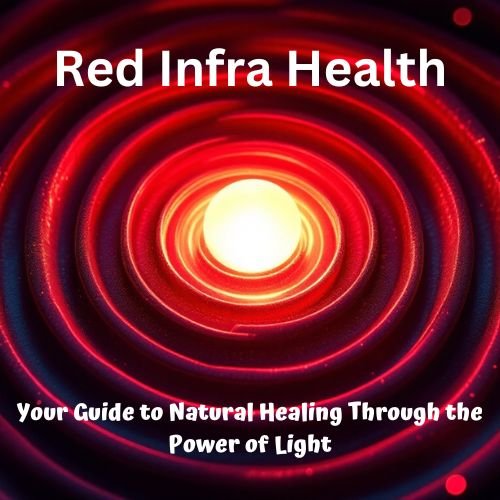




Leave a Reply